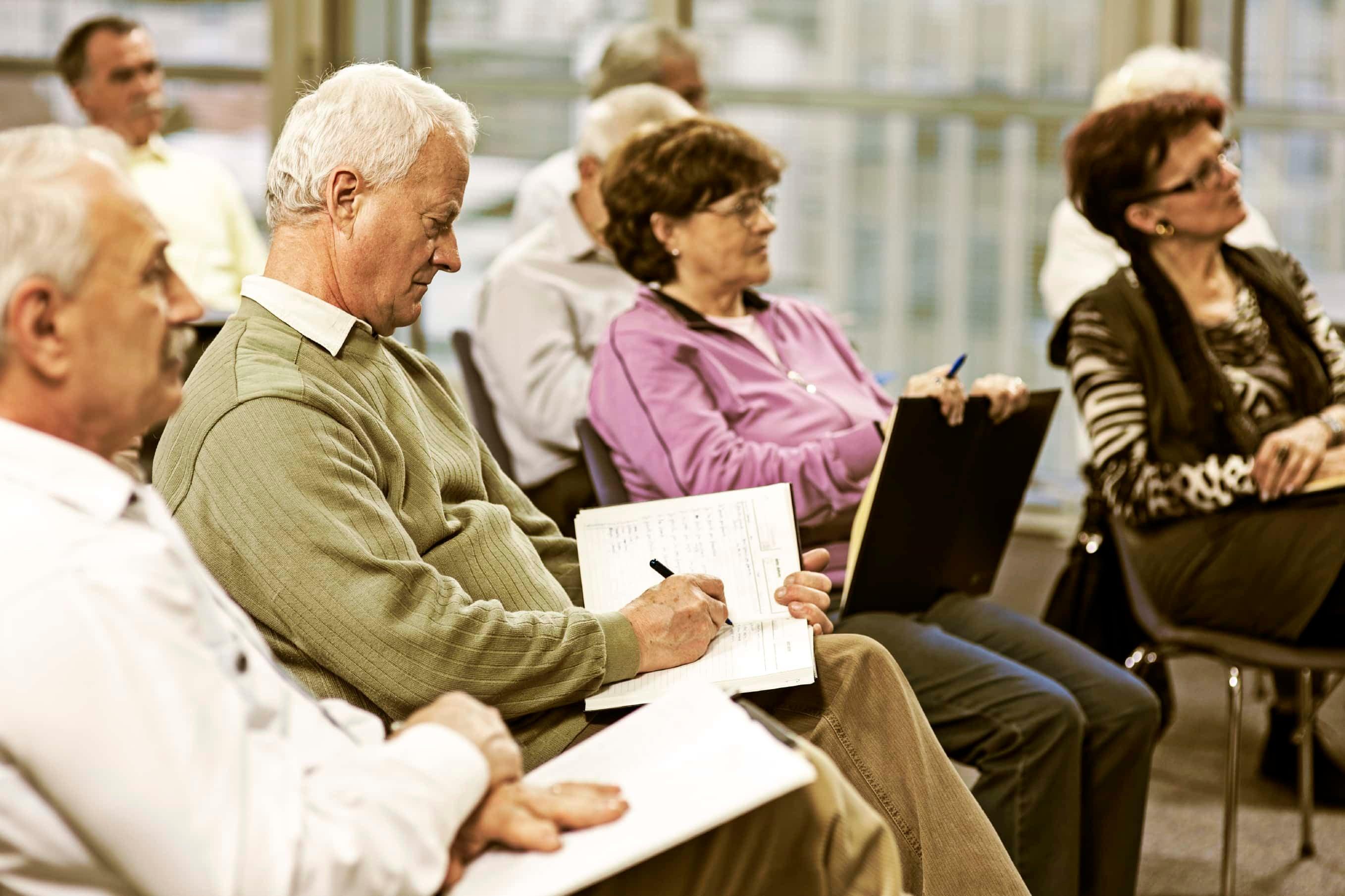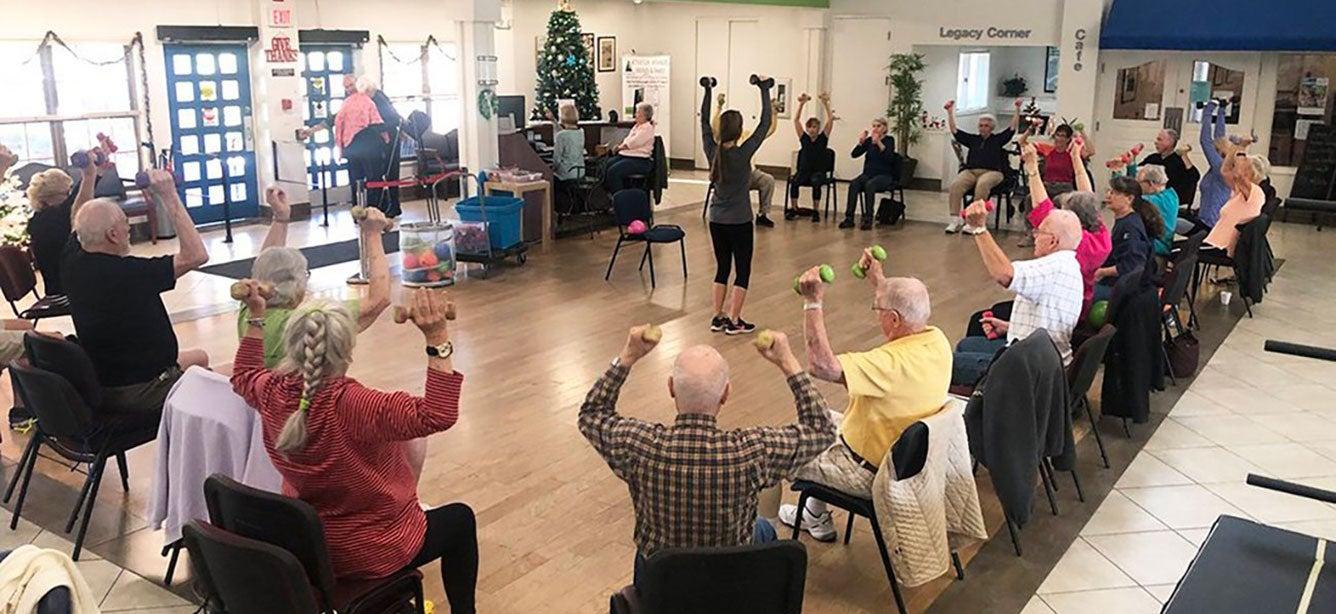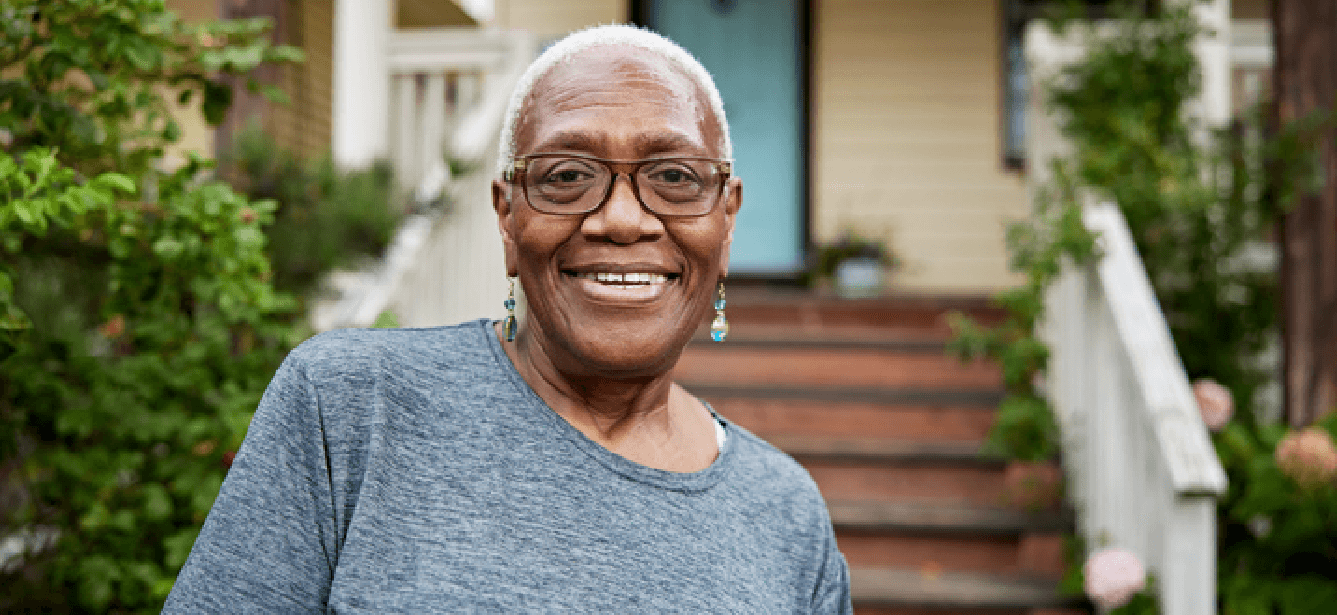
While everyone has the right to age well, women face unique challenges to aging with optimal health and economic security. These include:
- Problems with health and health care access
- Caregiving responsibilities that can drain health and retirement security
- Lower participation in employer-sponsored retirement plans
Women often make less money than men; they often work part time, take time away from work to care for children and aging parents, save less money, work in fields with fewer employer-sponsored retirement benefits, have more chronic diseases with their related costs, and feel less comfortable discussing finances.
Know some key facts about women and aging so you can help be part of the solution.
Women and health care access
- Nearly one in five women have no health care provider.1
- Overall, 10% of women said they didn’t see a doctor because of the costs. Hispanic and American Indian/Alaska Native women are most likely to say they didn’t see a doctor due to costs and white women are the least likely.2
- In 2021, 3 out of 4 women age 65+ with Medicare had a mammogram in the past 2 years. Screening rates were highest (82%) among Black women and lowest (59%) among American Indian/Alaska Native women.3
- Cardiovascular disease affects 60 million American women and is the leading cause of death, but only a little over half (56%) of women recognize it as such.4
- Black women are 60% more likely to have high blood pressure than white women, which greatly increases the risk of heart disease and stroke.4
Discrimination against women in health care
- Nearly half of older Black women said the health care system treats people differently based on their race or ethnicity—nearly one-third of white and Latina women agreed.5
- More than half of all women said that they believe gender discrimination is a serious problem, compared to one-third of men. One in five women said that a health care provider ignored or dismissed their symptoms, compared with 14% of men. Nearly one in five women said they have been treated differently because of their gender, compared to one in 20 men.6
- In a study about pain relief in hospital emergency departments, although men and women had similar pain scores, only 38% of women received any pain relief medication compared to 47% of men.7
The exclusion of women in medical research and clinical trials
- Medical schools and medical research consider a 154-pound, white male the average patient—this means that a white man’s biology has been guiding medicine and treatment options.8
- Women were excluded from clinical trials for years to protect them and their fetuses from the side effects. While Congress mandated including women in clinical research beginning in 1993, a recent Harvard Medical School study found that as of 2019, women were still substantially underrepresented in clinical trials for leading diseases.9
Women in work and retirement
- According to research conducted by NCOA, roughly one-third of all women and half (49%) of low-income women say their retirement income or savings will not be enough to pay their monthly bills.10
- The NCOA survey also found that half of all women, and 7 in 10 low-income women were not confident in being able to plan and save for retirement.10
- In 2024, the uncontrolled gender pay gap was $0.83 for every $1 that men made.11
- Women receive Social Security benefits that are, on average, 80% of the amount that men receive.12
- Women are more likely to work part-time jobs and therefore less likely to have an employer-sponsored retirement plan; approximately 43.5% of U.S. working age women have contributed to a retirement plan.13
Women as caregivers
- Roughly a quarter of women age 55+ provide some form of unpaid caregiving each day, which over the course of a year equates to five weeks of full-time unpaid work.14
- Over 2.3 million minor children are being raised by single grandmothers, and 1 in 5 grandmothers raising grandchildren are doing so while living in poverty.14
- Caregiving often impedes women’s ability to retain full-time employment. A 2023 study from AARP found that 27% of working caregivers reduced their hours and 16% stopped working entirely for a period of time to focus on their caregiving responsibilities.15
- One quarter of caregivers have less than $1,000 in savings, and caregivers are more likely to say that debt and poor health and problems for them.16
NCOA's role
The National Council on Aging (NCOA) is proud to champion the rights of older Americans. We believe every person deserves to age well, and we’re on a path to improve the lives of 40 million older adults by 2030. We will accomplish this by:
- Helping the voices of the vulnerable be heard so every older adult has the opportunity for healthy aging.
- Advocating for public policy change that supports all older adults, particularly those who are struggling, as well as the caregivers and community organizations that serve them.
- Empowering older adults to take charge of their own well-being by practicing falls prevention, chronic disease self-management, and mental health and wellness strategies.
- Connecting older Americans with quality health care services that meet their needs, including affordable prescription drugs, dental care, and long-term services and supports.
- Promoting awareness of and access to tools, resources, and knowledge that help all older adults age with dignity. This includes money-saving benefits, job training, and money management tips.
Sources
1. Kaiser Family Foundation. State Health Facts. Women Who Report Having No Personal Doctor/Health Care Provider by Race/Ethnicity. Timeframe: 2022. Found on the internet at https://www.kff.org/racial-equity-and-health-policy/state-indicator/women-report-no-personal-doctor-by-race-ethnicity/
2. Kaiser Family Foundation. State Health Facts. Women Who Report Not Seeing a Doctor in the Past 12 Months Due to Cost by Race/Ethnicity. Timeframe: 2022. Found on the internet at https://www.kff.org/womens-health-policy/state-indicator/women-who-did-not-see-a-doctor-in-the-past-12-months-due-to-cost-by-race-ethnicity/
3. Susan G Komen. How Do Breast Cancer Screening Rates Compare Among Different Groups in the U.S.? Found on the internet at https://www.komen.org/breast-cancer/screening/screening-disparities/
4. Centers for Disease Control and Prevention. Women and Heart Disease. Found on the internet at https://www.cdc.gov/heartdisease/women.htm
5. Michelle M. Doty, et al. How Discrimination in Health Care Affects Older Americans, and What Health Systems and Providers Can Do. The Commonwealth Fund. April 21, 2022. Found on the internet at https://www.commonwealthfund.org/publications/issue-briefs/2022/apr/how-discrimination-in-health-care-affects-older-americans
6. Emily Paulsen. Recognizing, Addressing Unintended Gender Bias in Patient Care. Duke Health. Jan. 14, 2020. Found on the internet at https://physicians.dukehealth.org/articles/recognizing-addressing-unintended-gender-bias-patient-care
7. Science Adviser. Emergency rooms are less likely to give female patients pain medication. Aug. 5, 2024. Found on the internet at https://www.science.org/content/article/emergency-rooms-are-less-likely-give-female-patients-pain-medication
8. Candy Sagon. The Gender Bias of Medicine. AARP Bulletin. January/February 2017. Found on the internet at https://www.aarp.org/health/conditions-treatments/info-2016/womens-health-gender-bias-cs.html
9. AAMC. Why we know so little about women’s health. Found on the internet at https://www.aamc.org/news/why-we-know-so-little-about-women-s-health
10. National Council on Aging. What Women Say About Their Finances. Found on the internet at https://www.ncoa.org/page/what-women-say-about-their-finances
11. Payscale. 2024 State of the Gender Pay Gap Report. Found on the internet at https://www.payscale.com/research-and-insights/gender-pay-gap/
12. Brookings. How does gender equality affect women in retirement? July 2020. Found on the internet at https://www.brookings.edu/articles/how-does-gender-equality-affect-women-in-retirement/
13. U.S. Department of Labor. Employee Benefits Security Administration. Women and Retirement Savings. Found on the internet at https://www.dol.gov/agencies/ebsa/about-ebsa/our-activities/resource-center/publications/women-and-retirement-savings
14. Livingston, G. U.S. Department of Labor. Older Women and Unpaid Caregiving in the U.S. November 2023. Found on the internet at https://www.dol.gov/sites/dolgov/files/WB/WBIssueBrief-OlderWomenAndUnpaidCaregiving.pdf
15. AARP. New U.S. Workforce Report: Nearly 70% of Family Caregivers Report Difficulty Balancing Career and Caregiving Responsibilities, Spurring Long-Term Impacts to U.S. Economy. May 16, 2024. Found on the internet at https://press.aarp.org/2024-5-16-US-Workforce-Report-70-Caregivers-Difficulty-Balancing-Career-Caregiving-Responsibilities
16. Employee Benefits Research Institute. Caregivers and Retirement: Findings From the 2023 Retirement Confidence Survey. July 13, 2023. Found on the internet at https://www.ebri.org/publications/research-publications/issue-briefs/content/caregivers-and-retirement-findings-from-the-2023-retirement-confidence-survey




